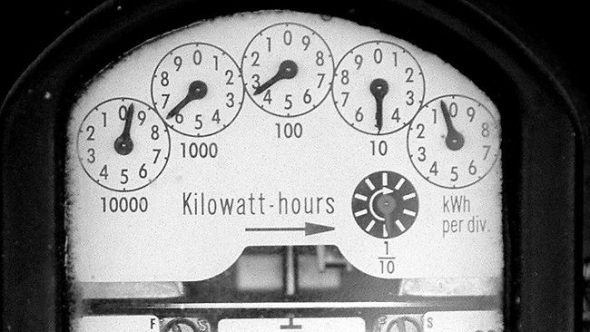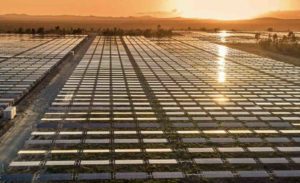Australian wholesale electricity prices have been doing some crazy things over the past month or so, and the temptation – particularly from the Murdoch media and the coal industry – has been to blame the rise of renewables.
Chief culprit, according to these people, is the increased share of wind and solar in South Australia, and the closure of the state’s last coal generator. And even some in mainstream media – including Fairfax and Reuters – repeat the scare campaign about renewable-caused blackouts and economy-crippling price rises without question.
There is yet more evidence to show that this is not true.
A report by the Australian Energy Regulator, which is keeping a close eye on market movements and the bidding patterns of the energy oligarchs, suggests that the problem lies more with unexpected surges in demand, and sudden withdrawals of demand (including by one large brown coal generator because it didn’t have enough coal).
The issue is a particularly sore one at the moment because there is huge discussion in the market about the bidding tactics of the major generators, including accusations that they have such control over the market that they are forcing up prices, possibly to push policy-makers into a corner over renewables, and possibly to push out smaller retailers, who are exposed to wild fluctuations in wholesale prices.
The AER now publishes a weekly report into wholesale prices, more of a warning to the oligarchs that they are being watched – hard as it is to prove any manipulation in an opaque market such as electricity.
It is technical but fascinating reading. And a few things stand out in the report for June 5 to June 11 that are worth attention.
The first is that South Australia is not quite the problem that everyone makes it out to be. From the creation of the National Electricity Market in 1999, thanks to its reliance on gas and the dominance of a small number of generators, the state has usually had higher electricity prices than elsewhere.

That margin has decreased in recent years. In 2014/15, (see the table above) South Australia actually had lower prices than Queensland (which had to rely more heavily on gas), and this year has been on par with Queensland and lower than Tasmania (which had to switch to gas to cope with the drought that shut down much of its hydro capacity and the loss of its Basslink connection).
What has been surprising to many players in the market has been the jump in wholesale markets in all states in recent weeks. AER looked at one week, June 5-11, when the price rose on seven occasions to three times higher than the average, and above $250/MWh.
One occasion typified the incidents. It was on June 5, a Sunday, at 3.30pm, when demand was 500MW above what had been forecast just four hours before, and supply was around 1,000MW lower.
The reason supply was lower will disappoint critics of wind and solar. It was not because clouds were covering solar panels, and it was not because the wind had suddenly stopped and becalmed turbines.
It was actually because a large amount of capacity had been withdrawn at short notice by large coal and gas plants. The Loy Yang B coal generator withdrew 420MW of capacity because of a “coal shortfall” – it didn’t have enough coal for the boilers.
The Eraring coal plant in NSW withdrew 350MW of capacity because of a “change in air heater limitations”, while Origin Energy withdrew 286MW of capacity from two gas plants – Uranquinty and Quarantine – because it figured it wouldn’t make enough money to justify restarting the generators.
The combined impact of these decisions was to push the price of electricity on the spot market to $285/MWh – on a Sunday afternoon when overall demand was quite low because most manufacturing was shut.
The question of sudden withdrawal of capacity by one of the major fossil fuel generator is one that constantly bugs the industry, as has the practice of “re-bidding”.
Prior investigations by the regulator have noted huge costs to consumers when this has occurred in Queensland, and it has also isolated some instances in South Australia. Both markets are dominated by a few powerful players, but collusion and mal-practice are incredibly hard to prove.
The AER report said that the rebidding that occurred on June 5 caused the wholesale price to jump by more than 50 per cent to $299/MWh. It cited several other instances were a similar withdrawals took place.
(It is worth remembering at this point that while wind and solar are variable, they are highly predictable, and can be managed. Market participants say that the biggest swings occur in unexpected movements, such as surges in demand or unexpected withdrawal of fossil fuel capacity).
And just to underline the point about which technologies make how much money from the shift in wholesale prices, this graph from the Melbourne Energy Institute shows that when wind is operating, prices are at their cheapest.

Wind farms reaped in an average $45.85 over 2015/16, and operated mostly when pool prices were $60/MWh or lower. (It also underlines why wind farms need the renewable energy certificates to break even).
Brown coal got an average of $53.81, because it was operating mostly in the same price bands as wind, but the technologies with the biggest average pool price were the gas and diesel generators.
Open cycle gas plants mostly operated when the pool price was $300/MWh or more, while the diesel plants were rarely switched on if prices were below $1,000MWh, and mostly operated when the price was $12,500/MWh or more.








